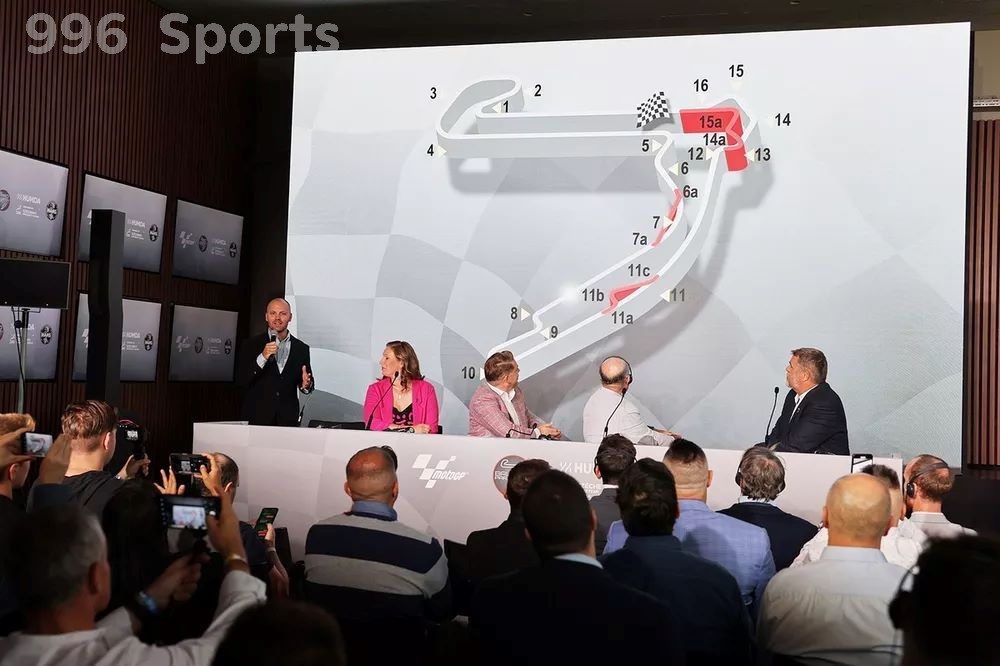MotoGP will participate in Hungary's first Grand Prix in over 30 years at Balaton Park in 2025. Motorsport.com visited it to see how it was formed

Hungary's Balaton Park will host the World Superbike and MotoGP for a month next year, marking the country's first return to top motorcycle racing in over 30 years.
The Balaton Park circuit is a 2.5-mile long track in western Hungary, owned by Chanoch Nissany, a former F1 practice starter. The track is far from being a repurposed airport like many other tracks started, but first broke ground in 2013 and was built with tourism and commerce in mind. The track is located on the edge of Balaton Lake - the largest lake in Central Europe and a popular tourist destination in itself - and is currently building a hotel on the final bend, with almost the entire track visible from the roof.
This is a suitable location for MotoGP's return to Hungarian soil, as the World Championship aims to welcome at least 120000 spectators during the three-day Hungarian Grand Prix.
Although the track will only open in May 2023, negotiations with MotoGP actually began as early as 2019- highlighting the commitment of the track and MotoGP initiator Dorna Sports to Hungarian racing. This commitment is reflected in the deal reached between Dorna and the Hungarian government agency HUMDA, as the Hungarian GP will be confirmed in some form over the next 10 years. Balaton Park has guaranteed three matches, but if the matches are re certified, they can choose to transfer to the more well-known Hengerling.
This certification is what Balaton Park is concerned about. Although the track was built according to FIA Level 1 standards, which theoretically allows it to host F1 races, and is currently Level 2, these standards are different from those set by the motorcycle management body, the FIM. Due to the very different collision modes of bicycles and the lack of a metal shell to protect riders from falling, a very different set of regulations is required.
With this in mind, Balaton Park is undergoing some expansion of the track, with nine time top race champion Loris Capirossi participating in the redesign. The first stage will remain unchanged, while the fast and clean Turn 7 will add two smaller radius corners to provide drivers with more lateral runoff.
The track will continue straight into the deceleration turns of turns 8 and 9, as well as the hairpin turn of turn 10. The second additional turn will appear along the rear straight; A new deceleration turn will be added to approximately one-third of the journey. The benefit of doing so is twofold - the speed will decrease and the new braking zone will provide additional overtaking opportunities. This is roughly the same as the MotoGP specific deceleration curve at the Red Bull Ring after Turn 1, which was implemented after the almost catastrophic collision between Johann Zarco and Franco Morbidelli in 2020.
Finally, the final section is undergoing renovation to provide better rider safety once again. At present, the deceleration turns at turns 12 and 13 will remain largely unchanged, but the track will take a detour through the inner side of the final section, allowing drivers to directly enter the starting and ending straights. This means that the angle of leaving the last bend will not face the wall, and the speed on the starting/ending straight should still reach 300 kilometers per hour.
Overall, the length of the track will only change by about 30 meters, and additional corners will cover the distance lost in the last stage. These additions will ensure that the track meets the standards set by the motorcycle management agency, FIMs.

We are very specific about the required runoff area
Dorna Sports Director Carlos Ezpeleta explained in interviews with selected media including Motorsport.com that it is difficult to find a track suitable for cycling.
MotoGP is very challenging in terms of track design, "he said. We are very specific in terms of the required runoff area, of course, I won't say it's a limitation, but a factor in where we can compete.
The speed level of MotoGP is certainly different from any other race. We maintain the highest speed on every track of each race. Of course, as our safety increases every year, this means we must have a larger runoff area than any other sport. But I don't think this must jeopardize the design of the circuit.
Of course, hosting competitions in Hungary is not the only motivation for the track and series - cultivating talent in the host country is another goal of the project. There are currently no MotoGP, WSBK, Moto2 or Moto3 drivers in Hungary, and the most promising driver for the future is 17-year-old Hungarian Red Bull rookie Kevin Fakas.
Former Hungarian MotoGP driver and 2007 125cc world champion G á bor Talm á csi predicts that this race will also help increase the visibility of other young Hungarian drivers.
Hosting MotoGP and Superbike races in Hungary is not only a great sporting event, but also an opportunity to promote the careers of young drivers, make this sport a focal point, and provide a perspective for the next generation, "Talm á csi said.
My goal is to increase people's recognition of motorcycles not only as a competitive sport, but also as a means of transportation, and to contribute to the development of young people and their awareness of road safety. The competition in 2025 can play an important role in raising awareness about this.
Whether this race will light up the Hungarian motorcycle remains to be seen, but it is clear that people are making every effort to give it the best opportunity. The project will begin next month and be completed around March 2025- four months before the first testing of the new layout, when WSBK will visit for the first time in 35 years.
